Implementing an Infrastructure as a Service (IaaS) solution can benefit organizations, including cost savings and increased flexibility. Here are the general steps to implement IaaS solutions.
General Steps to Implement IaaS
- Assess your current IT infrastructure and needs
- Choose an IaaS provider
- Define your IaaS architecture
- Configure your IaaS environment
- Migrate your data and applications
- Test and optimize your IaaS solution
- Monitor and manage your IaaS environment
Detailed Explanation of Each Step
The general steps for implementing an IaaS solution in detail are given below.
Assess your current IT infrastructure
The first step in implementing IaaS is to assess your current IT infrastructure and identify the areas that need improvement. Determine which applications, data, and services you want to migrate to the cloud and consider their scalability and security requirements.
Choose an IaaS provider
Once you have assessed your IT infrastructure, the next step is to choose an IaaS provider that meets your needs. Evaluate the IaaS provider’s security measures, performance, reliability, and scalability, as well as their pricing models and support options.
Define your IaaS architecture
Based on the business needs and requirements identified in the first step, design your IaaS architecture. Determine the types of virtual machines, storage, and networking components you need and how they will be connected.
Configure your IaaS environment
After defining your IaaS architecture, the next step is configuring your IaaS environment, which includes setting up your virtual machines, storage volumes, networking components, and security policies. Ensure your environment is properly secured, and all configurations align with best practices.
Migrate your data and applications
Once your IaaS environment is configured, the next step is to migrate your valuable data and applications to the cloud. Ensure all data is securely transferred and all applications are properly configured to work within your IaaS environment.
Test and optimize your IaaS solution
After migrating your data and applications to the cloud, test your IaaS solution to ensure everything works as expected. Optimize your solution for performance, scalability, and cost efficiency.
Monitor and manage your IaaS environment
Once your IaaS solution is up and running, you must monitor and manage your environment to ensure it remains secure and optimized. Implement appropriate monitoring and management tools to detect and resolve any issues proactively.
Implementing an IaaS solution requires careful planning, design, configuration, and management. By following these steps, organizations can successfully implement an IaaS solution that meets their needs and provides numerous benefits.
In Addition
To get maximum benefits, you can consider some additional factors given below.
Consider security and compliance requirements
When assessing your IT infrastructure and needs, consider any security and compliance requirements your organization must meet. Choose an IaaS provider with appropriate security measures and compliance with any relevant regulations.
Plan for scalability
Consider the future growth of your organization and ensure that your IaaS architecture is designed to scale as needed, which can help you avoid having to redesign your infrastructure in the future.
Choose an IaaS provider with excellent support
Customer service is important for all digital services. When choosing an IaaS provider, consider their support options. Look for a provider that offers 24/7 support and has a good reputation for customer service.
Implement a disaster recovery plan
The disaster recovery plan is important to secure your data on the cloud. Ensure your IaaS environment has a disaster recovery plan to help you recover from any unexpected outages or data loss.
Continuously monitor and optimize your IaaS solution
Regularly monitor your IaaS environment and optimize it for performance and cost efficiency, which can help you identify and fix any notable issues before they become bigger problems.
By following the additional suggestions above, you can ensure that your IaaS implementation is successful and provides maximum benefits for your organization.






















